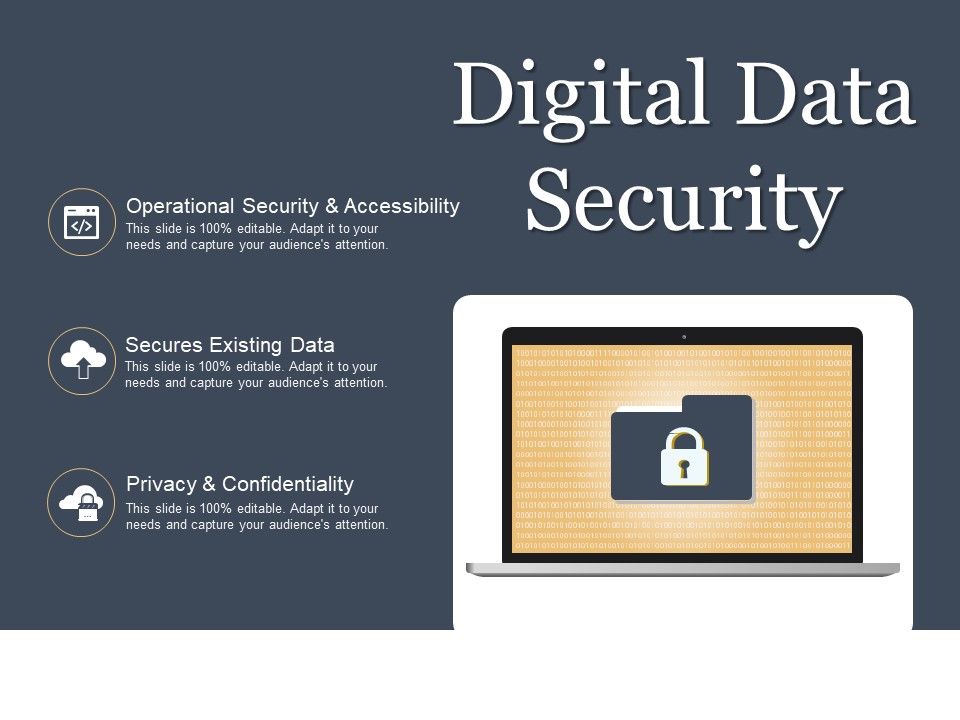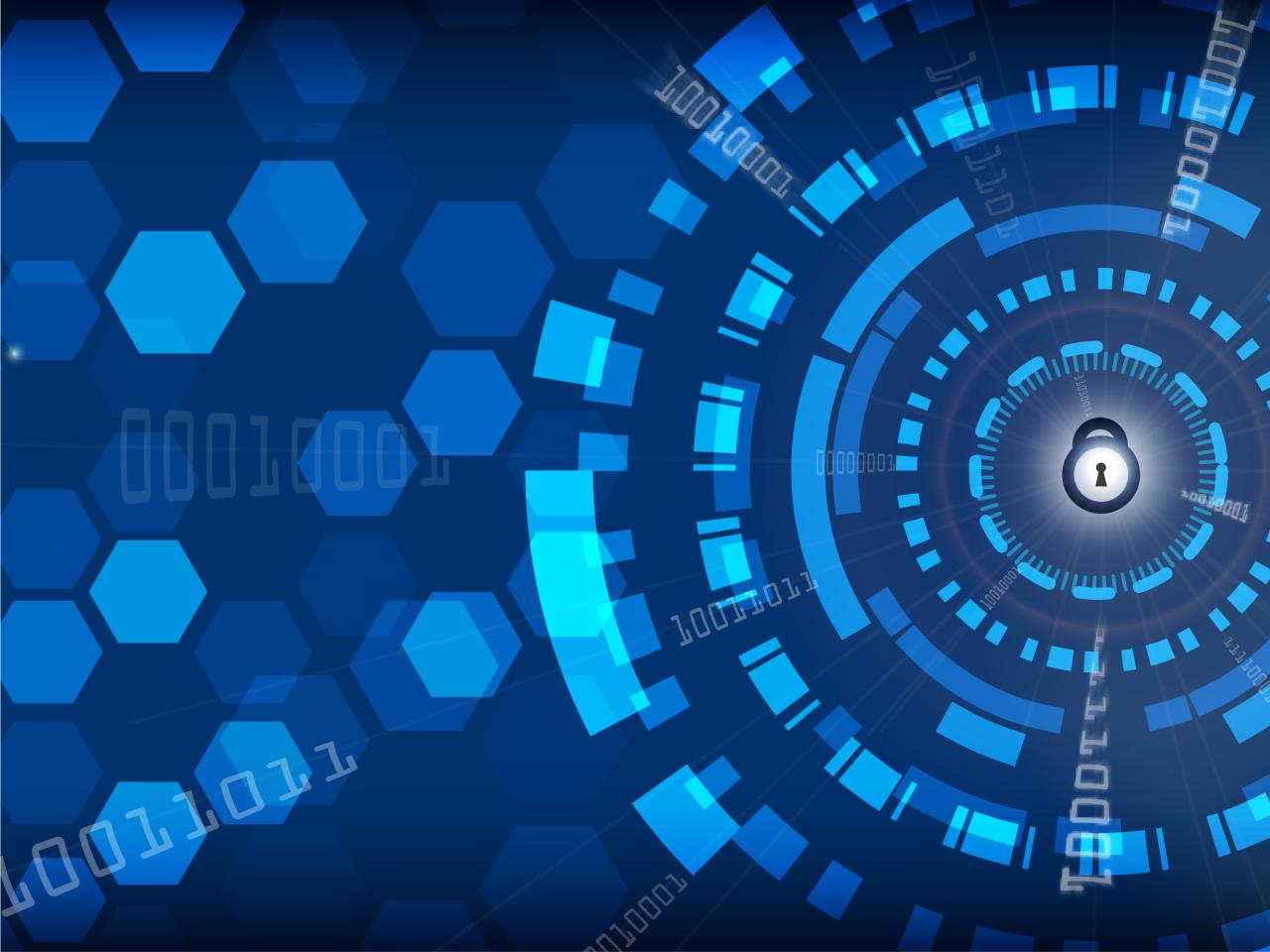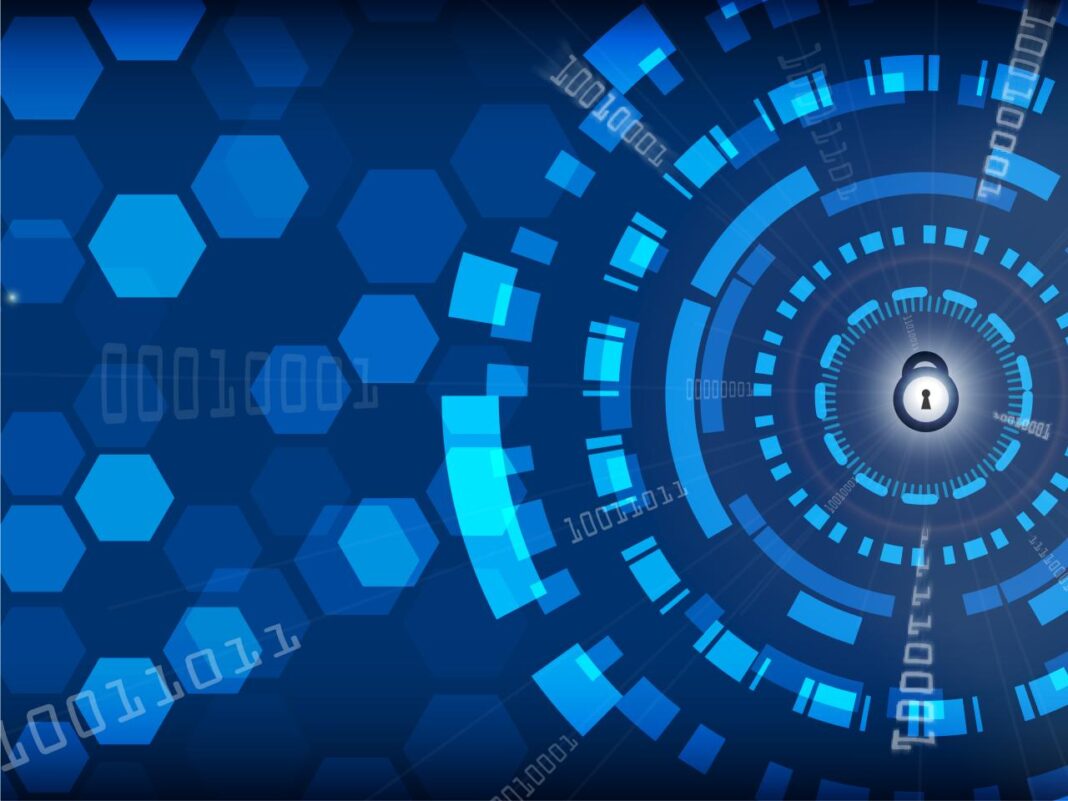Keamanan digital ppt is a comprehensive guide that explores the importance of digital security in today’s interconnected world. In this guide, we will discuss the potential risks and threats faced by individuals and organizations in the digital space. From malware to phishing and hacking, we will uncover the common types of digital threats and provide tips and best practices for protecting against them.
Join us as we delve into the strategies for digital security, explore the measures for securing personal information, and discover how organizations can safeguard their sensitive data. Get ready to enhance your digital security knowledge and protect yourself in the digital realm.
Introduction to Digital Security
In today’s interconnected world, digital security plays a crucial role in protecting individuals and organizations from various risks and threats. With the increasing reliance on technology and the internet, it has become essential to safeguard sensitive information and maintain the integrity of digital systems.
The Importance of Digital Security
Digital security ensures the confidentiality, availability, and integrity of data and systems. It prevents unauthorized access, data breaches, and other cybercrimes that can have severe consequences. By implementing robust digital security measures, individuals and organizations can protect their assets, maintain trust, and safeguard their reputation.
Potential Risks and Threats
The digital space presents numerous risks and threats that can compromise the security of individuals and organizations. These include phishing attacks, malware infections, data breaches, identity theft, and ransomware attacks. Cybercriminals are constantly evolving their tactics, making it necessary to stay vigilant and implement proactive security measures.
Impact of Cyberattacks
Recent cyberattacks have demonstrated the devastating impact they can have on businesses and individuals. For example, the WannaCry ransomware attack in 2017 affected hundreds of thousands of computers worldwide, causing massive disruptions and financial losses. Similarly, the Equifax data breach in 2017 exposed sensitive personal information of millions of individuals, leading to identity theft and financial fraud.
Increasing Cybercrime Statistics
The number of cybercrimes is on the rise, posing a significant threat to individuals and organizations alike. According to a recent report by the Cybersecurity Ventures, cybercrime is expected to cost the world $10.5 trillion annually by 2025. This alarming statistic highlights the urgent need for robust digital security measures to combat cyber threats effectively.
Common Types of Digital Threats

Digital systems and data are constantly at risk from various types of digital threats. Understanding these threats is crucial in order to protect ourselves and our information from potential harm. In this section, we will discuss some of the most common types of digital threats and how they can compromise the security of our digital systems and data.
Malware
Malware, short for malicious software, refers to any software designed to harm or exploit computer systems. It includes viruses, worms, Trojans, ransomware, spyware, and adware. Malware can enter our systems through infected email attachments, downloads from untrusted sources, or malicious websites.
Once installed, malware can steal sensitive information, damage files, or give unauthorized access to our systems.
Phishing
Phishing is a type of cyberattack where attackers trick individuals into providing sensitive information such as passwords, credit card numbers, or social security numbers. This is usually done through fake emails, messages, or websites that appear to be from a legitimate source.
Phishing attacks can result in identity theft, financial loss, or unauthorized access to personal accounts.
Hacking
Hacking involves gaining unauthorized access to computer systems or networks. Hackers can exploit vulnerabilities in software, weak passwords, or insecure network configurations to gain access to sensitive information or disrupt the functioning of systems. Hacking attacks can lead to data breaches, financial loss, or even the compromise of critical infrastructure.
Ransomware
Ransomware is a type of malware that encrypts the victim’s files and demands a ransom payment in exchange for the decryption key. It often enters systems through phishing emails or malicious downloads. Ransomware attacks can result in the loss of important data and financial loss if the victim decides to pay the ransom.These
When it comes to “perlindungan keamanan siber” or cyber security protection, legislation and executive authorities play a vital role. They are responsible for creating and enforcing laws and regulations to safeguard our digital space. It is essential to have a comprehensive framework in place to combat cyber attacks and ensure the safety of individuals and organizations.
To learn more about this topic, click here .
digital threats can compromise the security of our digital systems and data in various ways. They can lead to the theft of sensitive information, financial loss, disruption of services, and even reputational damage. It is important to be aware of these threats and take appropriate measures to protect ourselves and our digital assets.Real-world
examples of high-profile cyberattacks include the WannaCry ransomware attack in 2017, which affected hundreds of thousands of computers worldwide and caused significant disruption to businesses and organizations. Another example is the Equifax data breach in 2017, where the personal information of millions of individuals was compromised.To
protect against these threats, here are some tips and best practices:
- Keep your software and operating systems up to date to patch any vulnerabilities.
- Use strong and unique passwords for your accounts.
- Be cautious of unsolicited emails, messages, or downloads.
- Use reputable antivirus and antimalware software.
- Regularly backup your important data.
- Enable two-factor authentication whenever possible.
- Stay informed about the latest security threats and trends.
By being proactive and implementing these measures, we can significantly reduce the risk of falling victim to digital threats and protect our digital systems and data.
Strategies for Digital Security

Digital security is crucial in today’s interconnected world. With the increasing number of digital threats, it is important to implement effective strategies to protect sensitive data and prevent unauthorized access. In this section, we will discuss some key strategies for digital security.
Defense-in-Depth: Strengthening Your Defenses
Defense-in-depth is a concept that involves implementing multiple layers of security measures to protect against various types of threats. It recognizes that no single security measure is foolproof and that a combination of measures can provide better protection. By implementing multiple layers of security, such as firewalls, antivirus software, intrusion detection systems, and access controls, organizations can create a robust defense mechanism.
“Keamanan siber Indonesia” is an important issue that needs to be addressed. With the increasing dependency on technology, the country is facing various cyber threats. It is crucial for the government and relevant authorities to take necessary measures to protect our cyber security.
You can find more information about this topic here .
This approach ensures that even if one layer is breached, other layers can still provide protection.
Encryption: Safeguarding Sensitive Data
Encryption plays a crucial role in securing sensitive data. It involves encoding information in such a way that only authorized parties can access and understand it. By encrypting data, even if it is intercepted during transmission or storage, it remains unreadable and unusable to unauthorized individuals.
Encryption uses algorithms to convert plain text into ciphertext, which can only be decrypted with the appropriate decryption key. Implementing encryption protocols, such as SSL/TLS for secure web browsing or AES for data at rest, ensures that sensitive information remains protected.
Multi-Factor Authentication: Adding an Extra Layer of Security
Multi-factor authentication (MFA) is a security measure that requires users to provide multiple forms of identification to access a system or application. It adds an extra layer of security by combining something the user knows (password), something the user has (security token or smartphone), and something the user is (biometric data).
This multi-layered approach significantly reduces the risk of unauthorized access, as even if one factor is compromised, the attacker would still need to bypass the other factors. MFA is widely used in various industries to protect sensitive data and prevent unauthorized access.
Creating Strong and Unique Passwords: The First Line of Defense, Keamanan digital ppt
Passwords are often the first line of defense against unauthorized access. Creating strong and unique passwords is essential to protect your accounts and sensitive information. Tips for creating strong passwords include using a combination of uppercase and lowercase letters, numbers, and special characters.
It is important to avoid using easily guessable information, such as names, birthdays, or common words. Additionally, using different passwords for each account ensures that if one password is compromised, the other accounts remain secure.
Regular Software Updates and Patch Management: Keeping Security Up to Date
Regular software updates and patch management are crucial in maintaining digital security. Software updates often include security patches that address known vulnerabilities and weaknesses. By keeping your operating system, applications, and security software up to date, you ensure that you have the latest security enhancements and protection against emerging threats.
Neglecting software updates can leave your system vulnerable to attacks that exploit known vulnerabilities.By implementing these strategies for digital security, individuals and organizations can enhance their defenses and protect sensitive data from digital threats.
Digital Security for Individuals: Keamanan Digital Ppt

Digital security is crucial for individuals in protecting their personal information from unauthorized access and misuse. With the increasing reliance on digital devices and online platforms, it has become more important than ever to take proactive measures to safeguard our personal data.
Securing Personal Devices
It is essential to implement security measures on personal devices such as smartphones, laptops, and tablets to prevent unauthorized access to sensitive information. Here are some tips to enhance the security of personal devices:
- Set strong and unique passwords or passcodes for device lock screens.
- Enable biometric authentication methods, such as fingerprint or facial recognition, if available.
- Keep the operating system and apps up to date to ensure the latest security patches are installed.
- Install a reputable antivirus and anti-malware software to detect and remove malicious programs.
- Be cautious when downloading apps or software from third-party sources, as they may contain malware.
- Regularly back up important data to an external storage device or cloud storage.
Risks of Public Wi-Fi Networks
Public Wi-Fi networks are convenient but can pose significant risks to personal information security. Here’s how to stay safe while using public Wi-Fi:
- Avoid accessing sensitive information, such as banking or shopping websites, while connected to public Wi-Fi.
- Use a virtual private network (VPN) to encrypt your internet connection and protect your data from potential eavesdroppers.
- Ensure that automatic Wi-Fi connections are disabled on your devices to prevent unintentional connections to unsecured networks.
- Verify the legitimacy of the Wi-Fi network by confirming the exact name and location with the establishment providing the network.
Safe Online Shopping and Banking
Online shopping and banking provide convenience, but they also come with certain risks. To ensure a secure online experience, consider the following best practices:
- Shop or bank only on reputable and secure websites that use encryption to protect your data.
- Look for the padlock symbol and “https://” in the website’s URL, indicating a secure connection.
- Avoid clicking on suspicious links received through emails or messages, as they may lead to phishing websites.
- Regularly review your bank and credit card statements for any unauthorized transactions.
- Use strong and unique passwords for your online accounts and enable two-factor authentication whenever possible.
Social Engineering and Common Scams
Social engineering refers to manipulating individuals to gain unauthorized access to their personal information. It is essential to recognize and avoid common scams associated with social engineering. Here are some tips:
- Be cautious of unsolicited phone calls, emails, or messages asking for personal information or financial details.
- Verify the identity of individuals or organizations before sharing any sensitive information.
- Avoid clicking on suspicious links or downloading attachments from unknown sources.
- Regularly educate yourself about the latest scams and phishing techniques to stay informed and vigilant.
Remember, by implementing these digital security practices, individuals can significantly reduce the risk of falling victim to cyber threats and protect their personal information from unauthorized access and misuse.
Digital Security for Organizations
Organizations face numerous challenges in maintaining digital security. With the increasing reliance on technology and the rapid growth of cyber threats, it has become crucial for organizations to protect their digital assets and sensitive data from unauthorized access or malicious activities.One
of the major challenges organizations face is the constant evolution of digital threats. Hackers and cybercriminals are constantly finding new ways to exploit vulnerabilities in networks, systems, and software. This requires organizations to stay vigilant and up-to-date with the latest security measures and technologies.Employee
training and awareness play a crucial role in preventing security breaches. Many security incidents occur due to human error, such as falling victim to phishing scams or using weak passwords. By providing comprehensive training programs and raising awareness about common digital threats, organizations can empower their employees to make informed decisions and adopt secure practices.Network
security measures such as firewalls and intrusion detection systems are essential for protecting organizational networks from unauthorized access and malicious activities. Firewalls act as a barrier between internal and external networks, monitoring and controlling incoming and outgoing network traffic. Intrusion detection systems help detect and respond to potential security breaches by monitoring network activities and identifying unusual or suspicious behavior.Incident
response and disaster recovery plans are crucial in mitigating the impact of security incidents. In the event of a security breach, organizations need to have a well-defined incident response plan in place to effectively respond, contain, and recover from the incident.
Disaster recovery plans ensure that critical systems and data can be restored quickly and efficiently in the event of a security incident or natural disaster.Securing sensitive data and implementing access controls are vital for organizations to protect their valuable information.
Encryption techniques can be used to secure data both at rest and in transit. Access controls, such as user authentication and authorization, help ensure that only authorized individuals have access to sensitive data. Regular audits and monitoring of access logs can help identify and address any potential security vulnerabilities.By
implementing these best practices and continually adapting to emerging threats, organizations can enhance their digital security posture and safeguard their critical assets and data.
Ultimate Conclusion
In conclusion, keamanan digital ppt equips you with the necessary knowledge and tools to safeguard your digital world. By understanding the importance of digital security, recognizing various threats, and implementing effective strategies, you can stay one step ahead of cybercriminals.
Remember to stay updated with the latest security measures and always prioritize the protection of your personal information. Embrace keamanan digital ppt and embark on a secure digital journey today.
Quick FAQs
What is the significance of digital security in today’s world?
Digital security is crucial in our interconnected world as it protects our sensitive information, prevents unauthorized access to our digital systems, and safeguards against cyber threats that can have severe consequences on individuals and organizations.
How can I protect myself against common digital threats?
To protect yourself against common digital threats, you should regularly update your software, use strong and unique passwords, be cautious of suspicious emails and websites, avoid clicking on unknown links, and install reputable antivirus software.
What are some best practices for securing personal devices?
Some best practices for securing personal devices include enabling device encryption, using biometric authentication, keeping software up to date, avoiding public Wi-Fi networks, and being mindful of the apps you download.
How can organizations enhance their digital security?
Organizations can enhance their digital security by providing comprehensive employee training, implementing strong access controls, regularly updating their security measures, conducting vulnerability assessments, and having an incident response plan in place.
What is the role of encryption in digital security?
Encryption plays a vital role in digital security by encoding sensitive information, making it unreadable to unauthorized individuals. It ensures the confidentiality and integrity of data, protecting it from interception and tampering.
